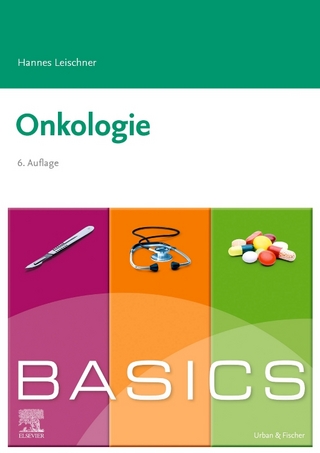
Redox-Active Therapeutics
Springer International Publishing (Verlag)
978-3-319-30703-9 (ISBN)
This essentialvolume comprehensively discusses redox-active therapeutics, focusingparticularly on their molecular design, mechanistic, pharmacological andmedicinal aspects. The first section of the book describes the basicaspects of the chemistry and biology of redox-active drugs and includes a briefoverview of the redox-based pathways involved in cancer and the medical aspectsof redox-active drugs, assuming little in the way of prior knowledge.Subsequent sections and chapters describe more specialized aspects of central nervous system injuries, neurodegenerativediseases, pain, radiation injury and radioprotection (such as of brain, lungs, headand neck and erectile function) and neglected diseases (e.g., leishmaniasis).It encompasses several major classes of redox-active experimental therapeutics, whichinclude porphyrins, salens, nitrones, and most notably metal-containing (e.g.,Mn, Fe, Cu, Zn, Sb) drugs as either single compounds or formulations withnanomaterials and quantum dots. Numerous illustrations, tablesand figures enhance and complement the text; extensive references to relevantliterature are also included.
Redox-Active Therapeutics is an invaluable addition to Springer's OxidativeStress in Applied Basic Research and Clinical Practice series. It is essential reading for researchers, clinicians and graduate studentsinterested in understanding and exploring the Redoxome-the organism redoxnetwork-as an emerging frontier in drug design, redox biology and medicine.
INES BATINIC-HABERLE, PhD Ines Batinic-Haberle is a Professor of Radiation Oncology at the Department of Radiation Oncology, Duke University School of Medicine. She received her B.Sc. in Food Chemistry, M.Sc. degree in Analytical Chemistry, and her Ph.D. degree in Bioinorganic Chemistry from the School of Pharmacy and Biochemistry, University of Zagreb, Croatia. She completed her postdoctoral education at the Department of Chemistry, Duke University. She then moved to the Department of Biochemistry at Duke University School of Medicine, where she was trained by Irwin Fridovich, the Father of the field of Free Radicals in Biology and Medicine. She spent 10 years in Fridovich’s Lab where she acquired the basis of her expertise in Oxidative Stress and Redox-Active Therapeutics and launched the design of powerful Mn porphyrin-based SOD mimics. She established the structure-activity relationship for Mn porphyrin-based SOD mimics, which she subsequently extended to all classes of SOD mimics. She holds a number of compositional and methods of use patents on metalloporphyrins; her lead compounds are either already in or entering Clinical Trials in 2016. She authored more than 190 manuscripts, several book chapters, has served as Guest/Invited Editor and reviewer of various prestigious journals and granting agencies both nationally and internationally. For the last 6 years she has served as a Society for Redox Biology and Medicine (SFRBM) Officer and is a founding member of the Society of Porphyrins and Phthalocyanines. She was recently awarded the SFRBM Excellence in Mentoring Award. She has organized numerous Symposia nationally and internationally and gave lectures at numerous Universities in the USA and abroad. She has established numerous collaborations with research groups in USA and internationally and worked actively in advancing metalloporphyrins towards clinic. JULIO S. REBOUCAS, PhD Julio S. Reboucas is an Adjunct Professor at Universidade Federal da Paraiba (UFPB, Brazil), Adjunct Head of the UFPB Chemistry Graduate Programs, and Fellow of the Brazilian National Research Council (CNPq). He received his Chemical Engineering B.Sc. and Chemistry M.Sc. degrees from Universidade Federal de Minas Gerais (Brazil) and his Chemistry Ph.D. degree from the University of British Columbia (Canada). He joined the Batinic-Haberle and Spasojevic Laboratories at Duke University (USA) in 2006, where he completed his postdoctoral training in oxidative stress and porphyrin-based redox-active therapeutics, before moving to UFPB in 2009 to establish an accredited porphyrin research group. His research spans the fields of medicinal and inorganic chemistry, with emphasis on porphyrin-based biomimetic systems. He has co-authored 52 manuscripts, two book chapters, and has one patent application. He is a founding member of the Society of Porphyrins and Phthalocyanines and currently serves as the elected Inorganic Chemistry Division secretary of the Brazilian Chemical Society. Among his honors and awards is receiving the Young Investigator Award by the Society for Redox Biology and Medicine. He has collaborated with various groups within Brazil and abroad on porphyrin chemistry and medicine. IVAN SPASOJEVIC, PhD Ivan Spasojevic is an Assistant Professor of Medicine at the Department of Medicine, Division of Oncology. He is also a Director of the PK/PD Core Lab of Duke Cancer Institute Pharmaceutical Research Shared Resource, an NCI-supported state-of-the-art bioanalytical facility providing study design and modeling expertise in pharmacokinetics/pharmacodynamics (PK/PD) and performing analysis of drugs and their metabolites, oxidative stress markers and other small biomolecules in general. His Lab has provided the invaluable support in the development of Mn porphyrins towards Clinical Trials. Ivan earned his B.Sc. degree in Chemical Engineering from the School of Chemical Engineering, Zagreb, Croatia and his Ph.D. Degree in Bioinorganic Chemistry from the Department of Chemistry, Duke University. He completed his postdoctoral training with Irwin Fridovich in the field of Oxidative stress and Free Radicals in Biology and Medicine and started his work on the design of Mn porphyrin-based SOD mimics. He has co-authored 126 manuscripts including several Book Chapters, has several compositional and method of use patents and patent applications. He has served as Guest/Invited Editor and reviewer of various prestigious journals and was invited speaker/organized symposia at National and International Meetings. He is a founding member of the Society of Porphyrins and Phthalocyanines. He has collaborated with numerous groups in and outside of USA in the field of drug development and pharmacokinetics.
Part1. Pathophysiological Roles of Superoxide Dismutases (SOD).- Superoxide and theSuperoxide Dismutases: An Introduction by Irwin Fridovich.- The Discovery ofSuperoxide Dismutase and Its Role in Redox Biology.- Manganese SuperoxideDismutase (MnSOD) and It's Importance in Mitochondrial Function and Cancer.- Regulationof the Cellular Redox Environment by Superoxide Dismutases, Catalase and GlutathionePeroxidases During Tumor Metastasis.- Superoxide Dismutase Family of Enzymes inBrain Neurogenesis and Radioprotection.- Metabolic Production of H2O2in Carcinogenesis and Cancer Treatment.- Part 2. Redox-Active Therapeutics -Design and Mechanisms of Action.- Mimicking SOD, Why and How: Bio-InspiredManganese Complexes as SOD Mimics.- Mn Porphyrin-Based Redox-ActiveTherapeutics.- Cytochrome P450-like Biomimetic Oxidation Catalysts Based on Mnporphyrins as Redox Modulators.- Nitrones as Potent Anticancer Therapeutics.- SalenManganese Complexes Mitigate Radiation Injury in Normal Tissues ThroughModulation of Tissue Environment.- Molecular Basis for Anticancer and AntiparasiteActivities of Copper-Based Drugs.- Small Signaling Molecules and CO-ReleasingMolecules (CORMs) for the Modulation of the Cellular Redox Metabolism.- HNO/ThiolBiology as a Therapeutic Target.- Part 3. Redox-Active Therapeutics in Cancer.-Advances in Breast Cancer Therapy Using Nitric Oxide and Nitroxyl Donor Agents.-Mechanisms by Which Manganese Porphyrins Affect Signaling in Cancer Cells.- TargetedTherapy for Malignant Brain Tumors.- Redox Therapeutics in Breast Cancer: Role ofSOD Mimics.- Anticancer Action of Mn porphyrins in Head and Neck Cancers.- Redox-basedTherapeutic Strategies in the Treatment of Skin Cancers.- Role of Oxidative Stressin Erectile Dysfunction after Prostate Cancer Therapy.- Theranostic Nanoconjugatesof Tetrapyrrolic Macrocycles and Their Applications in Photodynamic Therapy.-Part 4. Redox-Active Therapeutics in Other Diseases.- QuantumDots inPhotodynamic Therapy.- Metalloporphyrins in CNS injuries.- The Contribution of NitroxidativeStress to Pathophysiological Pain and Opioid Analgesic Failure.- AmyotrophicLateral Sclerosis - Present Understanding of the Role of SOD.- Redox Regulationand Misfolding of SOD1: Therapeutic Strategies for Amyotrophic LateralSclerosis.- Redox-Based Therapeutics for Prevention, Mitigation,and Treatment of Lung Injury Secondary to Radiation Exposure.- Using Metalloporphyrinsto Preserve beta Cell Mass and Inhibit Immune Responses in Diabetes.-Redox-Active Metal Complexes in Trypanosomatids.
| Erscheinungsdatum | 23.08.2016 |
|---|---|
| Reihe/Serie | Oxidative Stress in Applied Basic Research and Clinical Practice |
| Zusatzinfo | XXX, 694 p. 162 illus., 124 illus. in color. |
| Verlagsort | Cham |
| Sprache | englisch |
| Maße | 155 x 235 mm |
| Themenwelt | Medizin / Pharmazie ► Medizinische Fachgebiete ► Onkologie |
| Naturwissenschaften ► Biologie ► Biochemie | |
| Naturwissenschaften ► Biologie ► Mikrobiologie / Immunologie | |
| Naturwissenschaften ► Biologie ► Zellbiologie | |
| Schlagworte | Biomedical and Life Sciences • cancer mitochondria • Cancer Research • Diabetes • Enzymology • lung disease • metalloporphyrins • Oxidative stress • photodynamic therapy • redox-active drugs |
| ISBN-10 | 3-319-30703-7 / 3319307037 |
| ISBN-13 | 978-3-319-30703-9 / 9783319307039 |
| Zustand | Neuware |
| Haben Sie eine Frage zum Produkt? |
aus dem Bereich


